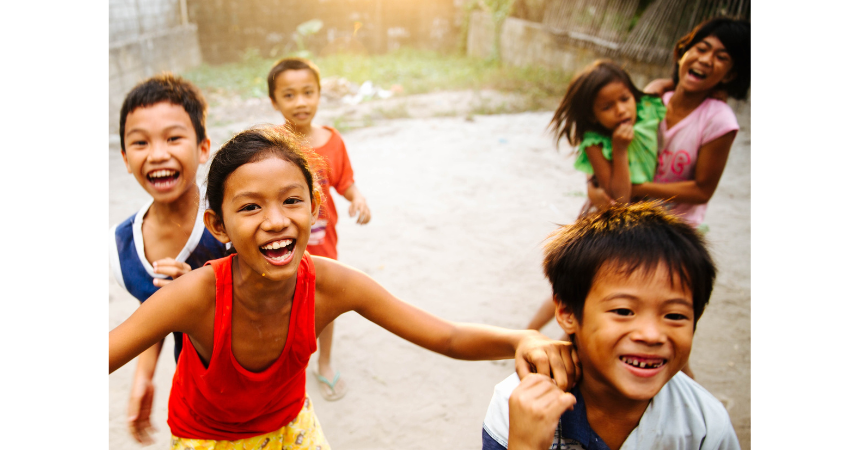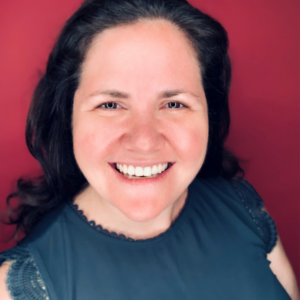International Day of Play 2025: Play is for Every Day & Everyone


By Katherine Tek, Senior Project Manager
Play is for every day, anywhere, and a right for all. Everyone deserves to have the space, time, and safety to play. As we celebrate International Day of Play, we hope you will take time to bring more play into your life and work, including work you do with children. This is an opportunity for engaging, laughing, interacting and learning together!
Often when a person says the word “play,” what may come to mind is “fun,” “silly,” “entertaining,” or “diverging.”
While these descriptions may apply sometimes, there are always deeper inner workings to the concept of play, particularly for young children. Opportunities to play can lead to inter- and intra-personal communication skills, social competencies, recognition of rules and power dynamics, hand and foot dexterity, and the list goes on.
In essence, when children play — and when caregivers play with children — the children LEARN. Play is critical to children’s development and their ability to survive and thrive.
Children have always played in one fashion or the other, and it begins at birth. The psychologist Jean Piaget wrote in the early 1960s about “play theory” and how play is key to children’s cognitive development, starting with the sensorimotor stage at infancy.
Much still holds true today. For example, have you ever held a baby and heard her cooed, and then made a cooing sound back and smiled, waiting to see if she would respond? Or sat with a 2-year-old and sang Itsy-Bitsy Spider with hand movements, all the while looking at him and encouraging him to do the same? These forms of play allow very young children to learn about the world through their senses and through their actions.
As children grow, play can become more exploratory, imaginative, and even concrete and hands-on.
Much as young children learn through sensory play, it is through these other types of play that older children continue learning, developing, and coming into themselves as human beings in how they relate to others.
Psychologists such as Lev Vygotsky authored “sociocultural theory” a century ago, and it still stands firm for play. They posit that we learn through social interactions, and our cognitive development is significantly shaped by those who are more skilled or knowledgeable. People can provide scaffolding or temporary support to us while we learn.
Let’s think about that for our own childhood play, particularly on playgrounds or in other dedicated play spaces. Were there ever other kids who you got to know through playing in your neighborhood or at your school? Did you learn how to wait your turn, share the space, or invite them to play along with you? Was there a caregiver who helped push you on the swings until you learned how to do it by yourself? Or were there caregivers or other children who ran around with you, went down on slides, jumped on the monkey bars, and climbed the walls with you so you could explore and learn how to do it, too?
Through this type of play, children develop socio-emotional skills such as the building of self-awareness, interpersonal relationships, empathy, tolerance, and decision-making. Play gives a path for children to discover who they are, how they want to relate to themselves and others, and what social norm limits may exist.
Play is also a force in protecting a child’s emotions, buffering them from or mitigating the effects of trauma and chronic stress.
During my time working in emergency response initiatives, I’ll never forget the story a colleague told me about a mother and two young children who had to endure a hurricane. As the mother sat exhausted at a shelter and the children enjoyed the child-friendly space, the colleague remarked how happy and calm the children appeared. The mother then explained how amid the flooding waters and storms she told her children how they would act like Dora the Explorer and take a grand adventure in a boat. As they canoed out into the water to get to dry ground and then to the shelter, they played and pretended as if they were discovering new lands.
It was through imaginative play that this woman’s children made it safely through what could have been a traumatic event and later were able to properly process their emotions of what occurred.
Play is possible across all regions and all contexts. We at Childhood Education International have collaborated with partners, educators, and families to create programs and resources to help make play accessible, equitable, and inclusive. For example, along with Sesame Workshop, BRAC, the International Rescue Committee (IRC), and NYU Global TIES for Children, we developed the Play to Learn Resource Hub, which shares free downloadable resources related to play and learning for children, families, and practitioners in humanitarian and crisis contexts.
We also partnered with the Ukrainian Institute for Educational Development to create free Early Childhood Development courses in English and Ukrainian that open up possibilities for play. The Holistic Language Pedagogies Compendium of Resources is another free resource that provides examples of play-based learning opportunities that educators and others can use in their work with students.
At CE International, we’ve worked around the globe to promote play and learning, co-creating resources and showcasing insights from educators and caregivers on what they’re doing to promote child wellbeing, as demonstrated in a program we conducted on social-emotional learning with partners in Serbia. We encourage you to check out any of these resources for ideas on how to encourage learning through play.
Wherever you may be, and whether you’re a child or adult, we hope you will find time today and every day to engage in play. May it fill you with wonder, imagination, and joy!
 Katherine Tek, Senior Project Manager
Katherine Tek, Senior Project ManagerKatherine Tek is an education professional with more than 15 years of teaching and training experience and work on psychosocial support and social-emotional learning concepts for schools and international non-profit organizations.
With a master’s in French language and literature, Katherine has taught and worked on education projects in the U.S., Haiti, and Senegal. After completing a master’s in international education, she worked within mainly the U.S. emergencies space and focused on PSS/SEL programs. She is passionate about education quality and how we can all support children’s and teacher’s well-being and resilience building.